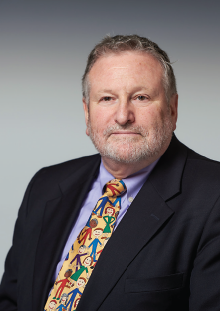Marriage Equality Laws Linked to Drop in Teen Suicide
Abstract
Experts say marriage equality laws are likely a proxy for other changes in attitudes that create a more tolerant and accepting atmosphere for teens who identify as belonging to a sexual minority.
Marriage equality laws appear to be associated with a reduction in the proportion of high school students reporting suicide attempts, according to a report published February 20 in JAMA Pediatrics.
Researchers and psychiatrists who commented on the study for Psychiatric News said that the report points to how social policy that reflects greater tolerance and reduced stigma may improve mental health. Though it would be difficult or impossible to prove that marriage equality laws directly influence suicide rates, experts say it is likely that such laws reflect cultural values and attitudes prevalent in those states that create a more tolerant and accepting environment for young people.
“[U]nderlying state characteristics are likely to influence both state same-sex marriage policies and the prevalence of suicide attempts, and states have different baseline levels of suicide attempts,” Julia Raifman, Sc.D., of the Johns Hopkins Bloomberg School of Public Health and colleagues wrote. “We addressed both of these issues by controlling for state, which accounts for time-invariant state characteristics such as cultural and political differences and controls for baseline state differences in the prevalence of suicide attempts.”
The researchers analyzed data on more than 700,000 public high school students who participated in the Youth Risk Behavior Surveillance System (YRBSS) from 1999 through 2015. They looked at changes in suicide attempts among the students before and after the implementation of state policies in 32 states permitting same-sex marriage and year-to-year changes in suicide attempts in 15 states without such policies. A secondary analysis examined how same sex-marriage laws affected suicide attempts among high school students who self-identified as belonging to a “sexual minority.”
Same-sex marriage equality policies were associated with a 0.6 percentage point reduction in suicide attempts—equivalent to a 7 percent decline in the proportion of all high school students reporting a suicide attempt within the past year. Among students who identified as belonging to a sexual minority, the absolute decrease in suicide was 4.0 percentage points—equivalent to a 14 percent relative decline in the proportion of adolescents who were sexual minorities reporting suicide attempts in the past year.
APA President Maria A. Oquendo, M.D., Ph.D., an expert in suicide, said the study points to the importance of environmental factors in risk for suicide. “We know that LGBT youth have significantly higher suicide rates, and this study supports the importance of advocating for policies that promote tolerance and acceptance,” she said.
APA CEO and Medical Director Saul Levin, M.D., M.P.A., concurred. “As a gay man and a gay psychiatrist, I am acutely aware of the effect of stigma and of the value of policies affirming tolerance and respect,” he said. “I’m proud of APA’s record of support for marriage equality, and the new report underscores the importance of that advocacy.”

“Marriage equality is a proxy for many changes in attitudes that create a matrix of social support for LGBT young people,” said Marshall Forstein, M.D.
Marshall Forstein, M.D., president of the APA Assembly Caucus of Lesbian, Gay, Bisexual, Transgender and Questioning/Queer Psychiatrists, said he believes marriage-equality laws are a marker for a host of social factors that create a more tolerant atmosphere for sexual minority youth, which, in turn, can help to diminish stigma and reduce the risk of suicide. “Marriage equality is a proxy for many changes in attitudes that create a matrix of social support for LGBT young people,” he said. “Increasing social tolerance creates the environment for increasing self-esteem.”
Forstein said it is likely, for instance, that states that have passed marriage-equality laws are more likely to be home to legislators or other high-profile people who have “come out” and communities that are more accepting of gay-friendly families.
Brian Hurley, M.D., representative to the AMA Section Council on Psychiatry from GLMA: Health Professionals Advancing LGBT Equality, agreed. He explained that the JAMA Pediatrics study tests a hypothesis based on the “minority stress model.” That model asserts that sexual or other minorities experience unique stressors, including stigma and discrimination, that may contribute to risk for suicide. The hypothesis is that social policies that reduce stigma and discrimination may ameliorate that risk.
“The JAMA report lends support to the minority stress hypothesis,” he told Psychiatric News. “The findings don’t prove that marriage equality directly reduces suicide risk, but it does suggest that marriage equality is associated with a host of contextual factors in states with such laws that create less minority stress.”
Hurley also said that while the vast majority of LGBT people are not suicidal, the study demonstrates the ways that sexual orientation can impact mental health outcomes. “[O]ne implication of the study for individual psychiatrists is that speaking to patients about their sexual orientation is a relevant part of a safety assessment and is clinically important,” he said. ■
An abstract of “Difference-in-Difference Analysis of the Association Between State Same-Sex Marriage Policies and Adolescent Suicide Attempts” can be accessed here.



